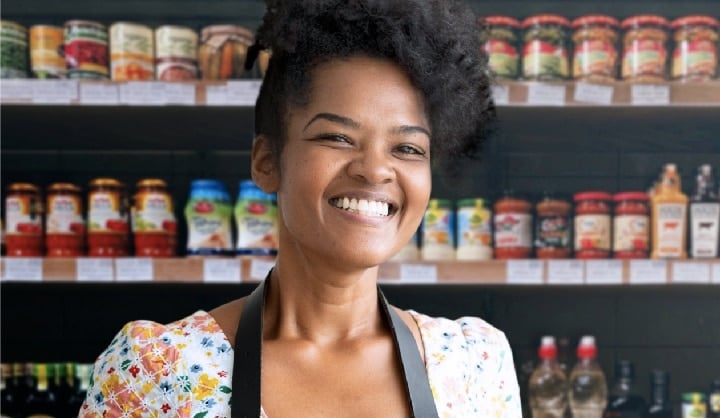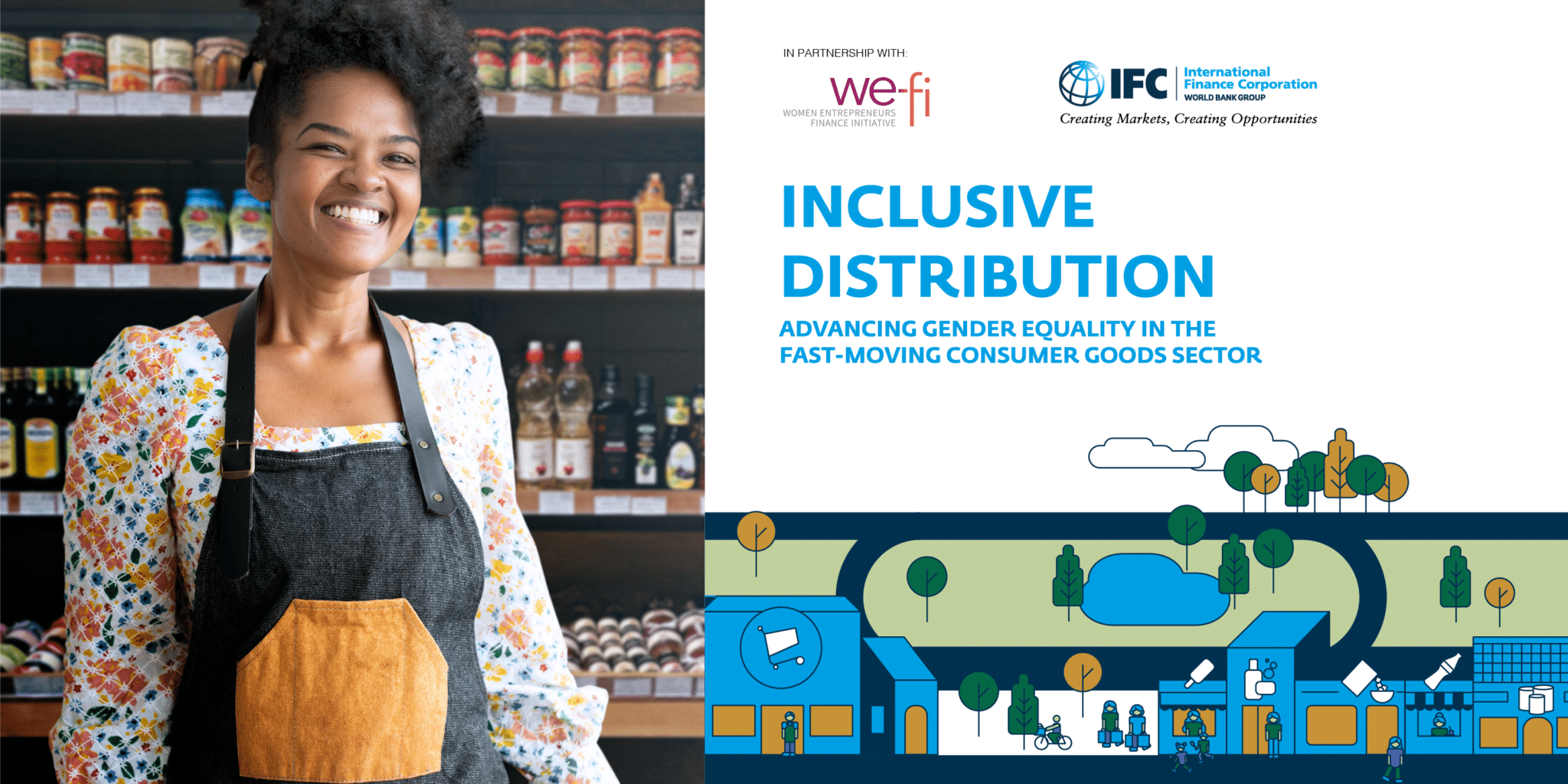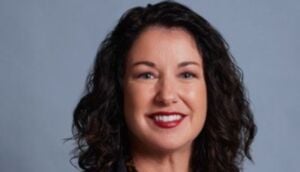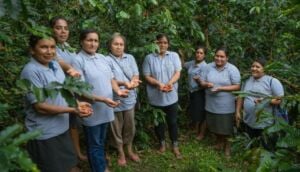Advancing Gender Equality through Inclusive Distribution Networks
Women play a vital role in fast-moving consumer goods, or FMCG, value chains. Much of the focus on accelerating gender equality in this space, however, has been limited to supporting women suppliers. Women can also play key roles in FMCG value chains, both as distributors and as retailers.
FMCG includes products like food and beverages, cleaning and paper products, personal care items, and other non-durable household items. In emerging markets, most of these products pass through indirect distribution channels comprised of multiple layers of distributors before ending up in small shops[1] and kiosks. Typically, retailers have to take time away from their store to procure goods from a central market or wholesaler, pay for transport, and haul the goods back to their stores.
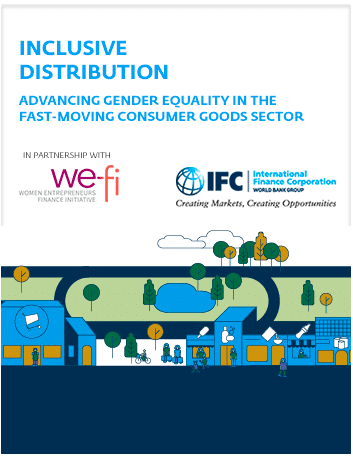
Indirect distribution channels are critical for getting products into the hands of consumers. In India, 75 percent of the country’s FMCG flow through small shops. In Nigeria, it is 98 percent.[2] However, the number of such shops that are owned or led by women can vary greatly. In the Philippines, women own 88 percent of the country’s micro, small, and medium enterprises (MSMEs) in the retail and wholesale industry.[3] While in Egypt, only 9 percent of the country’s total business owners are women—and just 32 percent of these women are in the retail and wholesale industry.[4]
Emerging to address the challenges associated with indirect distribution in emerging markets are digital business-to-business (B2B) distribution platforms, including TradeDepot in Nigeria, MaxAB in Egypt, and Growsari in the Philippines. These platforms are streamlining and digitizing the procurement process for retailers and increasing visibility for FMCG manufacturers. Platforms also provide an opportunity to better understand the representation and performance of women entrepreneurs in FMCG distribution networks.
What is the business case?
Three business benefits are emerging for FMCG actors to advance gender equality in distribution networks:
- Increase orders and sales volumes: Addressing gender inequalities can enable improved sales performance of women-owned/led distributors and retailers, leading to greater revenues for manufacturers and more orders for distribution platforms.
- Increase market share: Retailers play an important role in influencing the purchasing decisions of their customers.[5] Women entrepreneurs can play a key role in helping corporates reach the female consumer market. In 2020, Frost & Sullivan estimated that women controlled $43 trillion in global consumer spending.[6]
- Attract investment capital: A 2021 study showed that the volume of capital raised with a gender lens exceeded $6 billion.[7] Companies that advance gender equality through their distribution network can attract the interest of these investors.
What are the typical growth barriers for women in distribution?
Studies show that women distributors and retailers face a number of obstacles, which vary depending on their market context. Barriers include:
Social norms: In some markets, owning or running a distribution business or a retail shop is typically viewed as a man’s role. Social norms can also restrict a woman’s ability to travel safely or to travel alone. Women also often have substantial household care responsibilities that reduce the time they have available to operate their business.
Access to Business Resources: In developing countries, women-owned businesses face a $1.5 trillion gap.[8] Access to finance can enable MSME distributors and retailers to better manage the flow of their inventory and improve or expand their fleet of delivery vehicles or their storage or retail space. Women are also 20 percent less likely than men to use mobile internet,[9] which can impact their ability to fully leverage digital distribution platforms or digital marketing channels.
Information & Knowledge: Many small retailers have limited education and lack business skills and, in some cases, these gaps are greater for women. Many rely on manual bookkeeping methods and rarely track their inventory.[10] Women entrepreneurs can also lack access to networks which reduces their opportunities to get advice and access market information.[11]
How can FMCG actors take action?
Some leading manufacturers are already actively supporting women entrepreneurs in distribution, but all stakeholders can take steps to advance gender equality.
- Map participation. Begin by identifying the number or share of the company’s distributors, sub-distributors, and retailers that are owned/led by women. B2B distribution platforms can play a key role in this effort given the data they collect from the entrepreneurs on their platforms.
- Identify gaps. Determine if female distributors and retailers face any unique barriers to entry or growth in the given context, and the extent to which the barriers, if any, impact their performance.
- Implement relevant solutions. Develop and roll-out strategies to overcome the challenges, seeking out partners to leverage additional data and relationships. Share results to show the business benefits of inclusive distribution networks to encourage more actors, in more markets, to recognize the opportunity.
For more, please read IFC’s learning brief on Inclusive Distribution, developed with support from the Women Entrepreneurs Finance Initiative (We-Fi).
[1] Retail in the Corner Stores”. Evolving for the Next Billion. GGV Capital https://nextbn.ggvc.com/opinions/a-glimpse-of-future-retail-in-the-corner-stores/
[2] Nielsen. 2015. “Africa: How to Navigate the Retail Distribution Labyrinth”. New York: The Nielsen Company. https://www.nielsen.com/wp-content/uploads/sites/3/2019/04/africa-report-navigating-the-retail-dist-labyrinth-feb-2015.pdf
[3] APF Canada (Asia Pacific Foundation of Canada). 2018. “2018 Survey of Entrepreneurs and MSMEs in the Philippines: Building the Capacity of MSMEs Through Market Access”. Vancouver: APF Canada. https://apfcanada-msme. ca/sites/default/files/2018-10/2018%20Survey%20of%20Entrepreneurs%20and%20MSMEs%20in%20the%20Philippines.pdf
[4] ILO (International Labour Organization). 2016. “Women’s Entrepreneurship Development Assessment—Egypt”. Geneva: ILO. https://www.ilo.org/wcmsp5/groups/public/—ed_emp/—emp_ent/—ifp_seed/documents/publication/wcms_551168.pdf
[5] De La Portilla, Fabiola. 2016. “Successful Strategies in Traditional Trade Around the Globe”. New York: The Nielsen Company. https://www.nielsen.com/wp-content/uploads/sites/3/2019/04/Estudio_SuccessfulStrategiesinTraditionalTradeAroundTheGlobe.pdf
[6] Frost and Sullivan. 2020. “Global Female Income to Reach $24 Trillion in 2020, says Frost & Sullivan”
[7] Biegel, S., Brown, M., and Hunt, S. 2021. “Project Sage 4.0: Tracking Venture Capital, Private Equity, and Private Debt with a Gender Lens”. Philadelphia: Wharton Social Impact Initiative, University of Pennsylvania. https://socialimpact.wharton.upenn.edu/research-reports/reports-2/project-sage-4/
[8] SME Finance Forum. 2022. “MSME Finance Gap”. Website accessed May 3, 2022. https://www.smefinanceforum.org/data-sites/msme-finance-gap
[9] Rowntree, O. 2020. “The Mobile Gender Gap Report 2020”. London: GMSA (Global System for Mobile Communications Association). https://www.gsma.com/mobilefordevelopment/wp-content/uploads/2020/05/GSMAThe-Mobile-Gender-Gap-Report-2020.pdf
[10] IFC client case studies. Forthcoming.
[11] Asian Development Bank and The Asia Foundation. 2018. “Emerging Lessons on Women’s Entrepreneurship in Asia and the Pacific”. Manila: Asian Development Bank. https://www.adb.org/sites/default/files/publication/459551/womenentrepreneurship-lessons-asia-pacific.pdf
